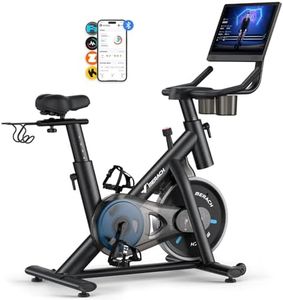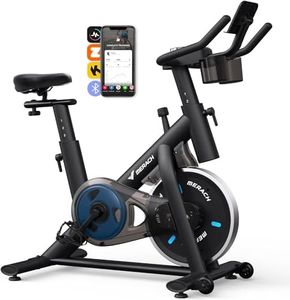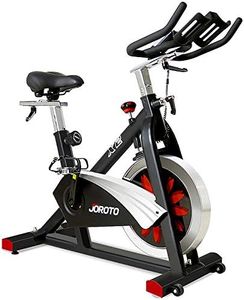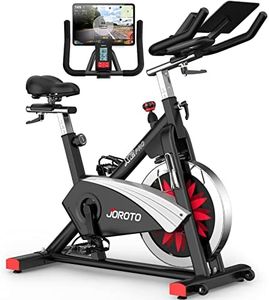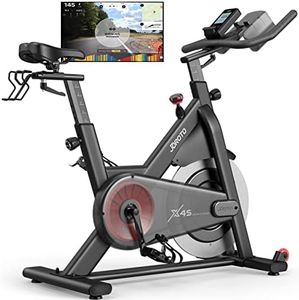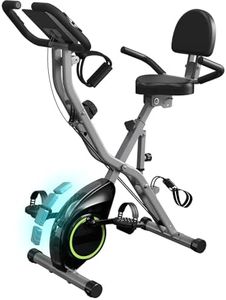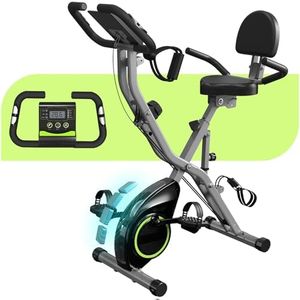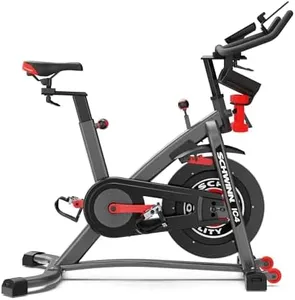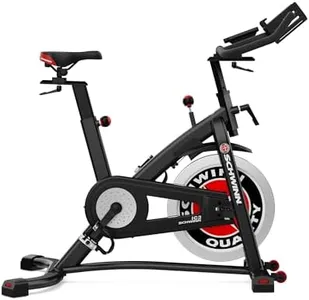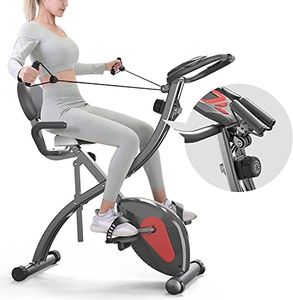We Use CookiesWe use cookies to enhance the security, performance,
functionality and for analytical and promotional activities. By continuing to browse this site you
are agreeing to our privacy policy
10 Best Indoor Bikes
From leading brands and best sellers available on the web.Buying Guide for the Best Indoor Bikes
Choosing the right indoor bike can greatly improve your at-home workout experience, making it more enjoyable and effective. Before buying, consider how you want to use the bike—whether for light exercise, intense training, or rehabilitation. Think about your available space, comfort preferences, and the type of exercise that motivates you most. Understanding the important specifications will help you match your needs with the bike’s features, ensuring you make a choice that keeps you committed and comfortable in your fitness journey.Resistance TypeResistance type refers to how the bike creates the feeling of pedaling effort, which is crucial because it affects the smoothness, noise level, and realism of your ride. The main types are magnetic, friction, and air resistance. Magnetic resistance is very quiet and allows for smooth changes in difficulty, making it great for home use and all fitness levels. Friction resistance uses pads pressing on the flywheel, which is common in traditional spin bikes; it's effective but can be noisier and requires pad replacement. Air resistance increases difficulty based on how fast you pedal, ideal for those looking for workouts that scale instantly with effort. If you value quiet workouts and low maintenance, magnetic is best. For those wanting a classic spin feel or who don't mind a little noise, friction or air might be a good fit.
AdjustabilityAdjustability covers how much you can change the bike's seat and handlebars, both in height and distance from the pedals and each other. This is important for proper posture, reducing injury risk, and ensuring comfort during longer rides. Some bikes offer minimal adjustments, suited for one primary user of average size, while others provide a wide range of settings, accommodating various body types or multiple users. If you are tall, short, or sharing the bike, look for a model offering both vertical and horizontal seat and handlebar adjustments.
Flywheel WeightFlywheel weight determines the momentum of the pedals, impacting how smooth and realistic your ride feels. Lighter flywheels (around 15-20 lbs) are easier to get spinning but can feel choppy, while heavier flywheels (around 35-50 lbs) provide a smoother ride and better simulate outdoor cycling but can be harder to start and stop. Beginners or those seeking less intense exercise might prefer a lighter flywheel, while more experienced or demanding users usually choose a heavier option for a challenge and fluid motion.
Console/Display FeaturesThe bike's console or display shows stats like speed, distance, time, resistance level, and sometimes heart rate or even connectivity with fitness apps. Simpler displays might only show basic information, which can be enough for casual users who want to track essentials. Advanced consoles offer interactive features like built-in workouts, Bluetooth connectivity, and large display screens, which are great for those who enjoy structured programs, online classes, or sharing data with fitness apps. Decide whether you want basic tracking or if digital engagement will motivate and enrich your workouts.
Size and PortabilityThe overall footprint and portability of the indoor bike affects where you can keep and use it. Some bikes are compact and lightweight, designed for easy movement and storage, making them ideal for smaller spaces or flexible use. Others are larger and heavier, offering more stability but less convenient to relocate. If you’re limited on space or need to store the bike after workouts, prioritize a smaller design with transport wheels. For those with a dedicated workout area, a larger, heavier model can offer a more solid ride experience.
Maximum Weight CapacityMaximum weight capacity is the highest user weight the bike is designed to safely support. Higher capacities generally mean a sturdier frame and greater durability. Standard bikes usually support up to 250-300 lbs, while heavy-duty models can handle more. To ensure both safety and longevity, choose a bike with a weight limit comfortably above your own weight or the weight of the heaviest expected user.
